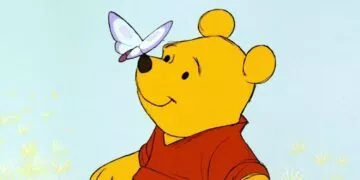Think back for a moment. When were you first introduced to Peter Pan? Did you read it in class or watch a school play?
Peter Pan is a fantasy tale of fairies, pirates, and adventurous kids that symbolizes childhood innocence.
If you think you know all there is to know about Peter Pan, think again. Here are some amazing facts about the boy who never grows up.
Peter Pan isn’t the excellent guy you think he is. In the original tale, he hated adults and stole little kids from their beds and families.
Peter Pan wasn’t always friendly to The Lost Boys. If he felt the group was becoming too large or the boys were growing up, he’d kill them.
The kids in the original play could fly without fairy dust. But after real kids got injured trying to fly, the author added fairy dust to the story.
Green wasn’t Peter Pan’s color in the books and stage plays. He was initially dressed in brown and tans, but Disney changed his outfit color to green.
The original Peter Pan was a play, not a novel. On December 27, 1904, the play opened on a stage in London. The novel adaptation came out later, in 1911.
They used special effects in the original stage play. Tinker Bell was only a tiny spot of light that darted across the stage.
Scottish novelist and playwright J. M. Barrie created Peter Pan but never saw a boy act as the character on stage. As was the tradition in theater at the time, full-grown women played boys. Nina Boucicault was Peter Pan in the first stage play in 1904.
J. M. Barrie first gave readers a glimpse of Peter Pan in 1902 in his novel, The Little White Bird, which has a few chapters dedicated to the character.
In The Little White Bird, Peter Pan was a seven-day-old baby who stepped out the window to play with fairies. Unfortunately, when he returned home, he saw his mom holding another baby and believed she didn’t want him anymore.
The Darling kids are based on real people. J. M. Barrie formed close relationships with George Llewelyn Davies and his younger brothers Peter, John, Nicholas, and Michael.
When the Davies boys sadly lost their parents, J. M. Barrie became their guardian.
Sources say that J. M. Barrie’s older brother, David inspired Peter Pan. At 13, David died in a tragic ice skating accident and remained a boy forever in the eyes of his family.
In the 1904 play, Peter Pan is a preteen boy. Although the books don’t fully describe his appearance, they add one crucial detail; he still had his baby teeth. This puts Peter Pan at 12 to 13 years old.
In 1929, J. M. Barrie signed off Peter Pan’s royalties to Great Ormond Street Hospital. They have a great relationship with the character to date.
The Peter Pan stories you know today aren’t the same as the original. J. M. Barrie loved to keep things fresh, so he updated the tale yearly.
Peter Pan had a love interest before Wendy. Her name was Maimie Mannering, a lost girl he met in Kensington Gardens. Their romance ended when Maimie decided to go home because her mom missed her too much.
Peter Llewelyn Davies didn’t like being linked to Peter Pan. While he may have inspired the character Peter Pan, he didn’t like the lifelong association.
Peter Pan made his first onscreen appearance on December 29, 1924. It was an American silent film of the same name produced by Paramount Pictures, which grossed $630,229 at the box office.
All records of the 1924 Peter Pan movie were nearly lost. Thankfully, James Card uncovered a well-preserved copy of the film at the Eastman School of Music in the 1950s.
In the 1924 Peter Pan film, Virginia Brown Faire played Tinker Bell as opposed to the spotlight used in the stage plays previously.
Peter Pan has the ability to bring his imagination into reality and has a sense of detecting imminent danger.
Walt Disney saw his first Peter Pan play at ten years old, which had a lasting impression on him. This led him to play the character in a school play. However, he only got to make his version of Peter Pan in 1953, 16 years after opening his studio.
Peter Pan isn’t just a story; It’s a core part of our childhood. J. M. Barrie’s relationship with the Llewelyn boys and the unfortunate passing of his brother inspired the tale of youthful escapism.
The story of the boy who refuses to grow up is worth revisiting.


















